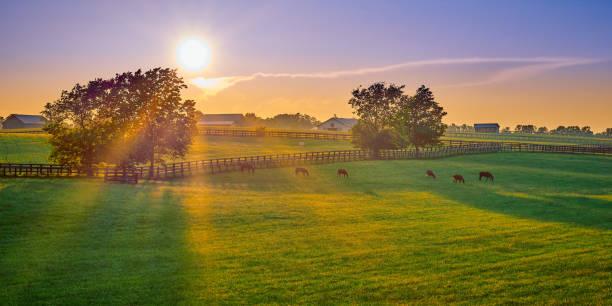Providing a secure environment for your livestock is essential for their well-being and productivity. From protecting them against predators to minimizing the risk of accidents and diseases, ensuring a safe and secure environment is paramount for livestock owners.
Here are six key strategies to help you create a secure environment for your livestock at the farm.
Installing Sturdy Fence
One of the most effective ways to protect your livestock and define their boundaries is by installing sturdy fencing around their grazing areas and enclosures. Choose fencing materials that are durable and appropriate for the size and type of livestock you own.
Make sure that you consult your fence contractors while choosing the fencing material. Moreover, Regularly inspect and maintain your fences to ensure they remain intact and secure, repairing any damage promptly to prevent escapes or intrusions by predators.
Provide Adequate Shelter
Livestock require access to shelter to protect them from extreme weather conditions, such as heat, cold, wind, and rain. Provide sturdy shelters, such as barns, run-in sheds, or three-sided shelters, where your livestock can seek refuge during inclement weather.
Ensure that shelters are well-ventilated, adequately sized, and free from hazards such as sharp edges or protruding nails. Additionally, regularly clean and maintain shelters to prevent the buildup of waste or debris that could pose health risks to your animals.
Implementing Predator Control Measures
Predators pose a significant threat to the safety and well-being of livestock, particularly in rural or remote areas. Implement predator control measures such as installing predator-proof livestock fence, using guardian animals such as livestock guardian dogs or llamas, and employing deterrents such as motion-activated lights or sound devices.
Regularly inspect your property for signs of predatory activity, such as tracks or scat, and take proactive steps to protect your livestock from potential threats.
Monitor Grazing Areas
Livestock grazing in open pastures or fields is vulnerable to various risks, including poisonous plants, uneven terrain, and water hazards. Regularly inspect grazing areas for potential hazards, such as toxic vegetation, holes, or steep slopes, and take steps to mitigate these risks.
Provide access to clean, fresh water sources and ensure that water troughs or ponds are safely fenced off to prevent accidents or drowning.
Secure Feed And Storage Areas
Proper storage of feed, hay, and supplements is essential for maintaining the health and safety of your livestock. Store feed in secure containers or bins to prevent contamination by pests or mold, and keep it protected from moisture and humidity.
Ensure that storage areas are well-ventilated and free from fire hazards, such as electrical equipment or flammable materials. Regularly inspect feed and hay for signs of spoilage or infestation, and discard any contaminated or moldy batches to prevent illness or digestive issues in your animals.
Establish Emergency Preparedness Plans
Despite your best efforts to create a secure environment for your livestock, emergencies can still occur. Establish emergency preparedness plans that outline procedures for evacuating animals in the event of natural disasters, such as wildfires, floods, or severe storms.
Maintain a well-stocked emergency kit containing essential supplies such as first aid materials, medications, and contact information for veterinary services.
